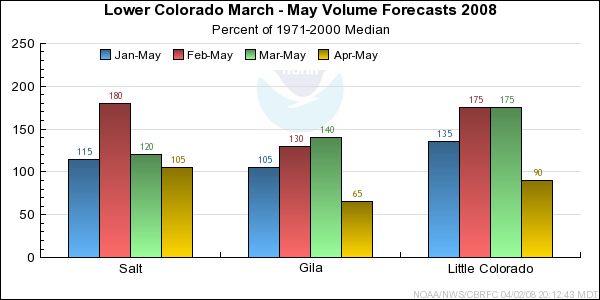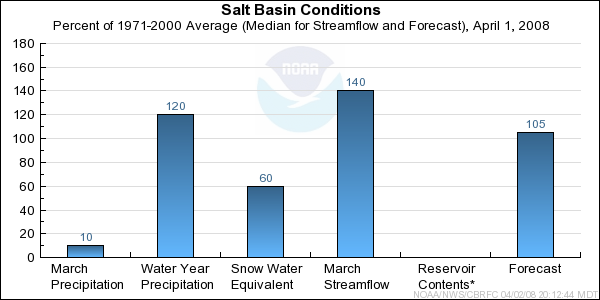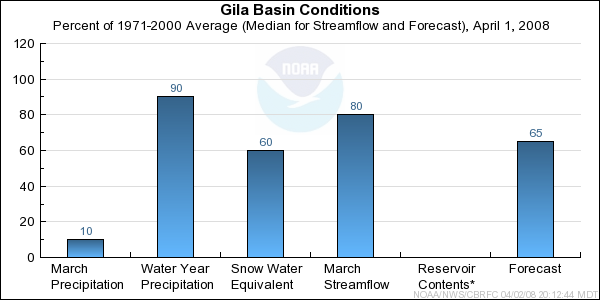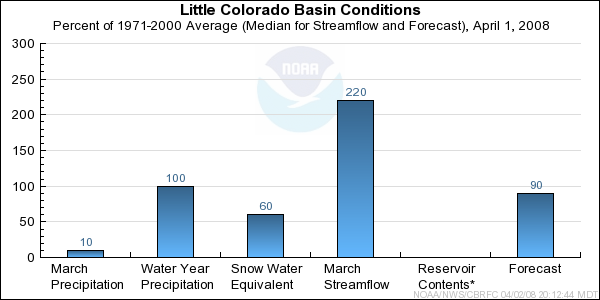Lower Colorado Water Supply Outlook, April 1, 2008
Note: This publication is scheduled for revision. If you have feedback on content, format, or publication frequency, please contact us.
Contents
Lower Colorado Summary
March was a very dry month across much of Arizona with many locations receving little or
no precipitation. Streamflows, which had been at levels that were much above median
throughout the winter months, dropped to below median levels due to drier conditions.
Exceptions to this were locations where a significant high elevation snowpack existed which
included the Salt, Verde, and southern headwaters of the Lower Colorado drainage. Streamflows
in these areas ranged from 120 to almost 300 percent of median. As of early April the only
snow that remains existed in protected high elevation locations. Runoff volumes for the
April-May period are expected to range from near 60 to 130 percent of median.

*Median of forecasts within each basin.
Salt Basin Conditions
April through May runoff volumes near median are expected in the Salt River Basin with volumes
in the Tonto and Verde Basins expected to range from 60 to 80 percent of median. Although precipitation
was much below average in March the melting of a significant high elevation snowpack contributed to
March streamflow volumes that were near 125 percent of median on the Salt River and 220 percent of
median on the Verde River. The snowpack in the Tonto drainage had been depeleted earlier and the March
streamflow volume was near 80 percent of median. Snowpack that remains in the White Mountains of the
Upper Salt Basin is limited to the highest elevations and was near 60 percent of average as of April 1st.

* Percent usable capacity, not percent average contents.
Click for multi-month Graph.
Gila Basin Conditions
April through May runoff volumes in the Gila River Basin are expected to range from
near 60 to 85 percent of median. Monthly runoff volumes in March reflected the dry conditions
of the month. March volumes in the upper Gila were near 60 percent of median. Much above
average snowpack in the San Francisco drainage melted off and contributed to March volumes near
100 to 110 percent of the historical median. Rivers in the Gila are now in their seasonal
decline.

* Percent usable capacity, not percent average contents.
Click for multi-month Graph.
Little Colorado Basin Conditions
April through May runoff volumes in the Little Colorado Basin are expected to range from
near 90 to 120 percent of median. Above median streamflow volumes were observed during March
despite much below average precipitation. This was due to the melt of high elevation snowpack.
Some snow still remains at highest elevations however it was melting off quickly. Streams
have been running above median as of late March and early April due to recent snow melt. In the
absence of any additional rain events Little Colorado Basin rivers will be in their seasonal
decline within the next 1-2 weeks.

* Percent usable capacity, not percent average contents.
Click for multi-month Graph.
Differences between the full period forecasts and the residual forecasts may not exactly equal the actual observed volumes due to rounding conventions (see Definitions section).
Precipitation Maps


Hydrologist: G. Smith







